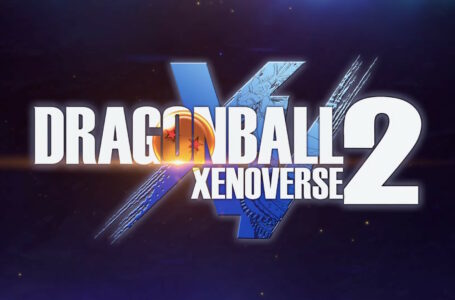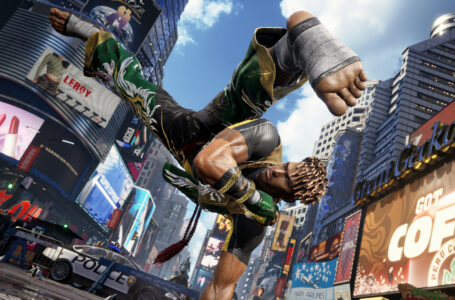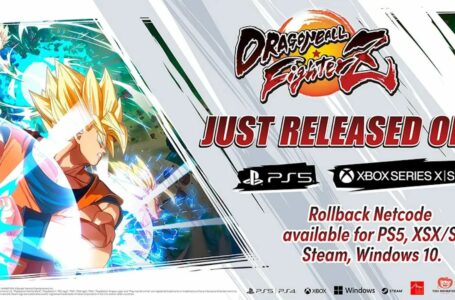My Hero One’s Justice Preview
Criminal admission incoming but I know absolutely nothing about My Hero Academia. However, I have been incredibly excited for the upcoming Bandai Namco arena fighter, My Hero One’s Justice, based almost solely on the fact that it looks like a genuinely great arena fighting game, a genre I haven’t enjoyed since Power Stone for the Sega Dreamcast.
The demo I played at Bandai Namco’s offices did not have any kind of story mode active, so I played a fair few Versus matches to get a feel for the game and the mechanics it possesses. I would presume that the story mode of the game would follow the basic beats of the anime and manga that it’s based on, but cannot say for sure.
My Hero One’s Justice is an arena fighter, which is to say that the players fight in a 3D arena, within which they have free rein to move their characters wherever they choose. The difference with this particular title being that the player takes in a team of fighters instead of simply one, with all of the chaos that usually ensues with that set-up. The end result is flashy, hectic brawls between what is in essence two sets of three.
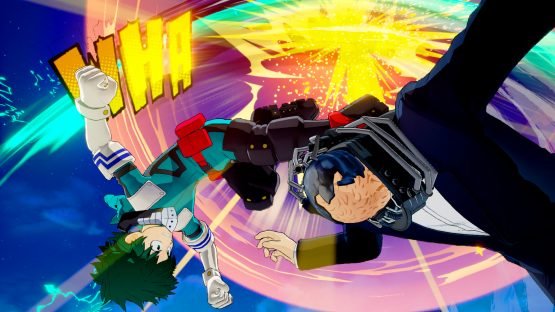
The basic mechanics involve the standard fare; you have a basic attack, which will auto combo on subsequent presses, two specials mapped to triangle and circle, a dash and a guard. These will form the majority of techniques that a player will perform in any given match. Even with these however, there is an unmistakable tightness to how these feel to execute, and that’s not even taking into account the advanced techniques.
Rounding out the gameplay, and making it more than a simple standard brawler, you have the ‘Assists’ and the ‘Ultras’. The assists will bring in one of the two other characters on your team for a single special attack, which can be used as a single shot to blindside your opponent or as a hit to allow you to extend your combos further. It’s in this mechanic that a lot of the more strategic and technical play comes about.
The ‘Ultras’ are what is essentially the super attacks of My Hero One’s Justice, of which there are Plus Ultra and EX Plus Ultra versions (because of course there are). The Plus Ultra attacks are essentially more powerful specials, with the one mapped to R1+Square actually breaking your opponent’s guard if it lands. The EX Plus Ultras are devastating one-shot moves that can cause colossal damage but require a lot of meter to execute.
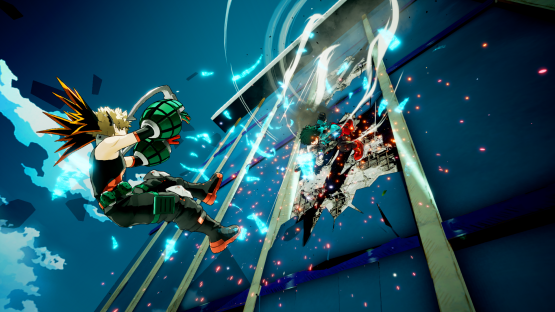
As a final wonderful addition to the game from a mechanical standpoint, the ground isn’t the only battlefield you can duke it out on. In fact, the player can be knocked into, or knock their opponent into the walls and other surfaces and resume the combat from there. This not only feels great to do, like in the demo in which I launched my opponent into the side of the school and dashed up to join them and continue the beatdown on the side of a building, but it also looks phenomenal with dynamic camera transitions to chart the movement.
In fact, before I even get to the visuals, I have to highlight how well the camera has been implemented in this title, even in this demo version. Whereas the camera in a lot of games tends to just get in the way and be a general inconvenience to the player, the camera in My Hero One’s Justice will dynamically switch focus dependent on the action currently unfolding. It seems like a little thing, and it is, but it really shows you what you need to see at any given time.
This is obviously important if owing to the fact that this game is unbelievably stunning to behold. All of the characters are unique and distinctive, even from their portraits on the character select screen, and all of the stages look quite honestly like something from an anime (which I presume to be My Hero Academia, which would make sense). In fact, the arenas themselves are so pretty that it’s a shame that you can actually destroy a lot of the aspects of them during gameplay.
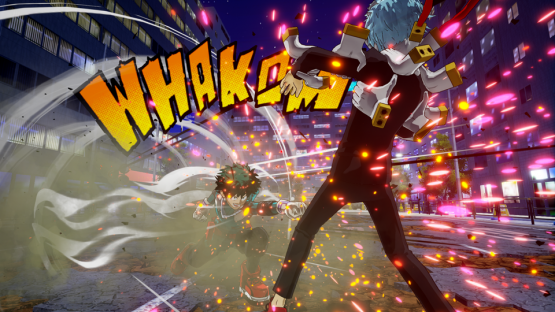
The sound design is incredible too, perfectly matching the visuals in terms of explosive energy but not falling into the pitfalls that many team-based fighters fall into of having far too much occurring at once on an audiovisual level. All of the sound effects are punchy and lend additional weight to the attacks, ad the voice acting is great throughout as well. My Hero One’s Justice definitely matches, and even beats some of, its contemporaries from an aesthetic standpoint.
For someone who has never seen the source material, but one with a sizeable experience with fighting games, I came away from playing My Hero One’s Justice thoroughly impressed. The basic and advanced mechanics are solid, the aesthetic is incredibly well put together, and the entire thing comes together in a way that doesn’t feel as messy as a lot of modern fighters. If Bandai Namco get the right amount of content in the game, this could be one of the best fighters of the year.
Do you think you’ll pick up My Hero One’s Justice when it launches on October 26th? Do you already have a favourite character that you’ll likely play? Let us know in the comments, or on Twitter, and check back in the future for more coverage of this game and other Japanese titles.
- New Persona 5 Royal Trailer Introduces Kasumi And Special Edition Revealed - June 6, 2019
- New Bloodstained: Ritual of the Night Character Revealed Ahead Of Release - May 31, 2019
- Final Fantasy XIV: Shadowbringers Preview - May 29, 2019



